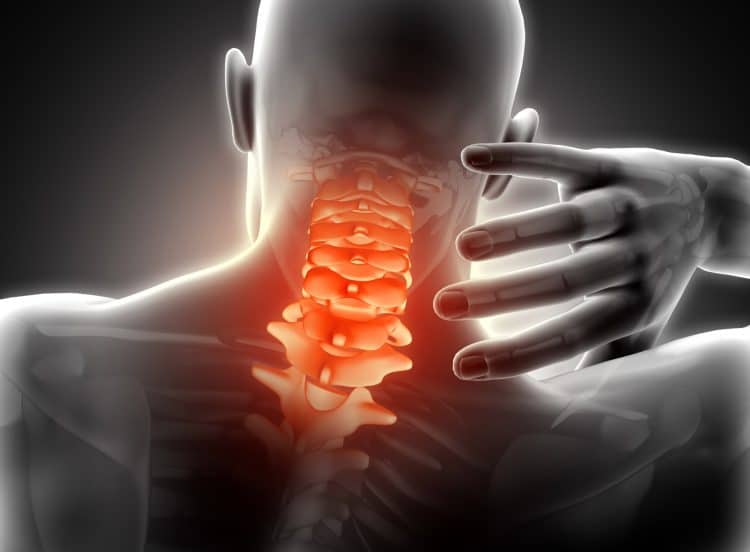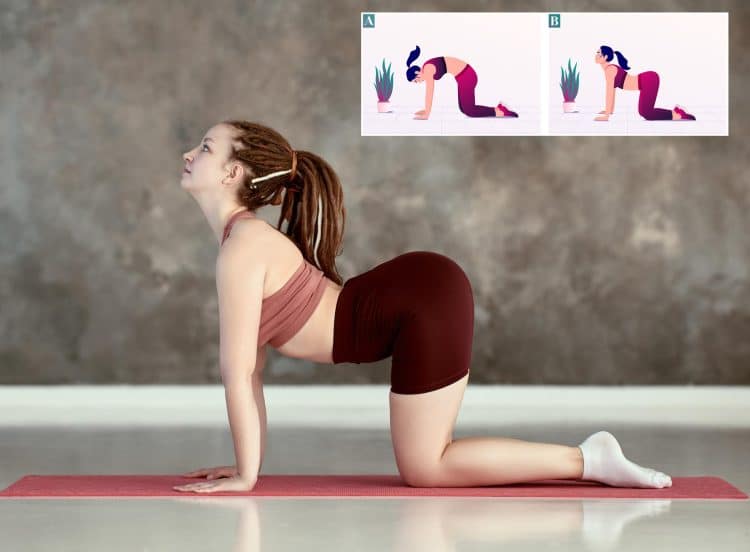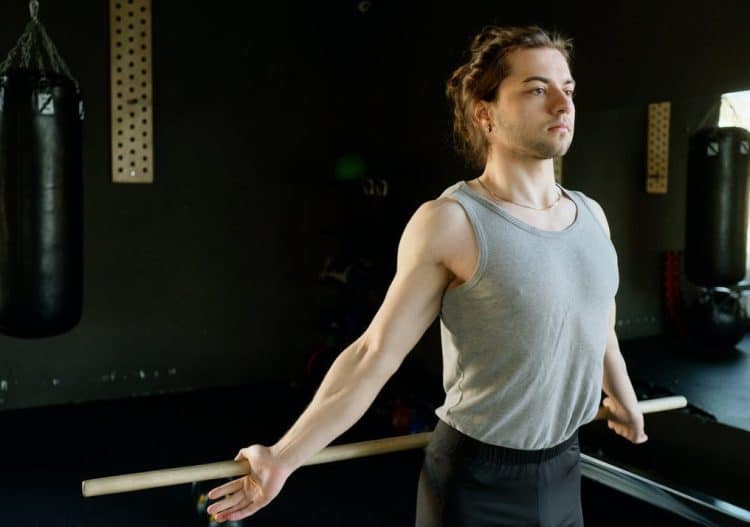Posture is the alignment of a joint or joints, and it can be good or bad. With good posture, very little muscular tension is required to maintain your position, and the stress on your joints and connective tissues is very low.
In contrast, when you are in bad posture, your muscles must work much harder to hold you in position, and there is more unwanted stress on your ligaments, tendons, and joints.
Poor posture can cause a host of problems, including:
- Neck pain
- Back pain
- Shoulder pain
- Headaches
- Referred nerve pain
- Muscle spasms
- Muscle tension
- Inhibited breathing
- Reduced range of motion
- Poor sports or exercise performance
- Poor appearance
Your posture is affected by everything you do, and, unfortunately, modern life is not very posture-friendly.
Long periods of sitting and using electronic devices can drastically affect your posture. The more time you spend sitting in front of a computer or hunched over your phone, the more likely you are to have poor posture.

The good news is that there are several simple exercises you can do to improve your posture and alleviate the side effects of hunching over your laptop and craning your neck forward to see your phone screen.
In this article, we reveal some of the best exercises for training two of the most common postural issues – nerd neck and desk slouch.
Read also: The Best Exercises for A Thicker, Stronger Neck
What is Nerd Neck and Desk Slouch?
Like all things related to the human body, posture can be described using technical terms like kyphosis and cervical lordosis. But most people prefer more colloquial names like nerd neck or desk slouch, so those are the terms we’re going to use in this article.
So, firstly, nerd neck…
Nerd neck occurs when your head juts forward, so your ears are in front of your shoulders. This puts tremendous stress on your neck muscles, ligaments, and intervertebral discs.

In fact, studies estimate that severe nerd neck can increase the effective weight of your head by as much as 400% (1). However, even a small amount of head jut effectively doubles the weight of your head.
Also known as tech neck and forward head posture or FHP, nerd neck is the result of tight muscles on the front of your neck and weak muscles on the back.
Initially, people crane their heads forward to get closer to their screens, but, in time, this posture becomes habitual, and they have nerd neck even when not using a phone or computer. As a result, many people walk around with their heads thrust forward, even when they’re not using their smart devices.
Desk slouch often accompanies nerd neck. More properly called hyperkyphosis, desk slouch is an excessively rounded upper back. The upper back SHOULD be slightly rounded, but in a desk slouch, this curve is exaggerated.
Causes of desk slouch include hunching over a keyboard, doing too much chest training, weak upper back muscles, and slouching through laziness or lack of postural awareness. Some taller people develop a slouch simply because they are embarrassed by their height and try to disguise it.
Like nerd neck, desk slouch puts a lot of stress on the soft tissues of the spine and can cause pain and dysfunction. If you have a hard time doing overhead presses without hyperextending your lower back, it’s a safe bet that you are suffering from desk slouch.
Exercises to Fix Nerd Neck and Desk Slouch
Nerd neck is primarily the result of tight anterior and weak posterior neck muscles. In the case of desk slouch, the cause is mainly tight chest and shoulder muscles and weak upper back muscles.
So, the best fix is to stretch what is tight and strengthen what is weak.
Of course, these interventions will not have much impact if you continue to jut your head forward or slump over your desk.
Poor posture is often the result of habit, and it’ll take more than a few minutes of stretching and strengthening to fix your nerd neck and desk slouch if you spend all day sitting in bad posture.
But, with practice, and more postural awareness, you can improve your posture and learn to sit and stand more upright.
Do the following exercises to reduce nerd neck and desk slouch. There are three phases of exercise – mobilization, stretching, and strengthening. Do them in that order for best results.
Mobilization Exercises
Before you start trying to stretch and strengthen the requisite muscles, you need to warm up the joints and soft tissues you are going to work. This will increase blood flow, make your muscles more pliable, and reduce muscle tension.
1. Yes, No, Maybe
With this exercise, you gently nod and turn your head to mobilize your neck joints and muscles. Simply look up toward the ceiling and then down at your toes several times until you feel your neck start to loosen and warm up. This should not be painful, but you should raise and lower your head to where you feel muscle tension.
After raising and lowering your head, switch to lateral rotations and turn your head from side to side. As before, this should not hurt, but you should turn your head until you feel tension in your neck muscles.
Do about 10-20 slow, controlled reps of each exercise. Afterward, your neck should feel a little looser, especially if you were stationary for some time beforehand.
2. Cat/Cow
Cat/cow is a yoga exercise that will mobilize your upper back and neck. Done on all fours, this exercise also helps reduce tension in your lumbar spine.

How to do it:
- Get down on all fours so your hips are over your knees and your shoulders are above your hips.
- With straight arms, lower your head toward the floor, tip your pelvis under, and lift the center of your back toward the ceiling. Gently contract your abs as you do this.
- Next, raise your head, tip your tailbone up to the ceiling, and lower your abdomen toward the floor.
- Alternate smoothly between these two positions 10-20 times to mobilize your entire spine and neck.
Stretching Exercises
Once you are mobile and warmed up, it’s time to stretch the muscles that are pulling you forward and out of good posture. If you don’t, the strengthening exercises that you’re about to do will be much less effective.
1. Neck Extension Stretch
This simple exercise stretches the muscles on the front of your neck. You can do it seated or standing as preferred.
How to do it:
- Tuck your chin in and then lift your head to look at the ceiling.
- Clench your teeth together and pull your shoulders down and back. You should feel a deep stretch down the front of your neck.
- Hold this position for 20-30 seconds, relax for a moment, and repeat.
2. Broomstick Chest Opener
This simple exercise uses a broomstick to stretch your chest and shoulders and externally rotate your arms, undoing many of the effects of sitting at a desk. You should also feel your back muscles engage.

How to do it:
- Hold a broomstick behind your lower back with your palms facing forward.
- Squeeze your shoulders down and back and pull your elbows in to open your chest and stretch your shoulders. Keep your head up and neutral – no nerd neck!
- Hold for 20-30 seconds, rest a moment, and then repeat.
Strengthening Exercises
Now that you have released your tight muscles, it’s time to strengthen the muscles responsible for maintaining good posture. However, you don’t need low rep-high force strength. After all, you need to be able to maintain good posture for hours, and not just a few seconds.
So, instead of using heavy weights and low reps, these exercises work best with low muscle tension but held for a long time or done for high reps.
1. Wall Neck Bridge
This exercise strengthens the muscles at the back of your neck, which are responsible for holding your head up against gravity. Do not confuse this bridging exercise with the wrestler’s bridge – they have nothing in common!
How to do it:
- Stand with your back to a smooth wall. Lean your back and head against it. Your feet should be about 12-18 inches in front of you. Place a folded towel between your head and the wall for comfort if required.
- Tuck your chin in and press the back of your head firmly against the wall. Pull your shoulders down and back.
- Push your hips and back off the wall, so your weight is supported by your feet and head only.
- Hold for 20-30 seconds, rest a moment, and repeat. Build up to sets of 2-3 minutes.
2. Prone Broomstick Press
This exercise strengthens your lower and middle trapezius, rhomboids, posterior deltoids, and erector spinae muscles. As well as being an excellent postural exercise, it’s also a great warm-up before upper body training, as it enhances thoracic spine mobility and shoulder stability.
How to do it:
- Lie on your front with your arms extended. Hold your broomstick with an overhand, wider than shoulder width grip. The wider your hands are, the easier this exercise is, so adjust your grip accordingly.
- Raise your arms off the floor and lift your chest slightly.
- Bend your arms and pull the broomstick to the back of your neck (hardest) or upper chest (easiest).
- Extend your arms, lower them to the floor, and repeat.
- Work up from 30 seconds per set to 2-3 minutes.
FAQs
1. How often can/should I do these exercises?
You should do these exercises at least once a day, and preferably 2-4 times. The longer you spend sitting or standing in poor posture, the more work you’ll need to correct it.
Set a timer on your phone to remind you to do the exercises, for example, on waking, at midday, when you get home from work, and before bed.
2. My neck/shoulders hurt – what should I do?
While some mild discomfort is expected if you have neck or upper back issues, pain suggests that the problem may be more serious. If your neck, upper back, or shoulders hurt, you should get professional medical advice from a chiropractor, kinesiologist, or similar.
3. I feel great after doing the exercises but soon drift back into poor posture. What can I do?
Unfortunately, these mobilizing, stretching, and strengthening exercises will only provide temporary relief, especially if you go straight back to sitting in a hunched position or with your head jutting forward after doing them.
The effect will last longer if you develop the habit of sitting and standing in good posture. Think about keeping your shoulders down and back and lifting the crown of your head up toward the ceiling. Avoid activities that involve slouching or craning your neck forward.
For example, don’t lower your head to look at your phone. Instead, raise your phone to eye level. Ensure your work station is set up so that your screen is level with your eyes to save you from hunching over it.
Maintaining good posture will take a conscious effort, and you’ll often forget to do it. However, with practice, it will start to become a habit.
Set a reminder on your phone to ping every hour or so. Use this as a prompt to sit or stand up straight.
4. What else can I do to work on my posture?
Poor posture is often the result of being sedentary. Even if you hit the gym a few times a week for an hour or more, you could still be classed as sedentary if you have an office job or don’t do much additional physical activity.
So, do your best to sit less and move more. Walk whenever you can and break up long periods of sitting with brief bouts of movement, even if it’s just a quick trip to the water cooler every 30 minutes.
Whatever you are doing, become more posture conscious and actively avoid slouching and craning your head forward. Also, use fewer pillows at night so you don’t sleep with your neck flexed excessively.
Think “long and tall,” and imagine your head is a balloon floating at the end of your neck. The more you do this, the more readily good posture will become a habit.
5. I’m doing these exercises, but my posture isn’t improving. What can I do?
It could be ha your poor posture is so ingrained that general mobilization, stretching, and strengthening exercises are not enough to fix it. For example, you may need some chiropractic adjustments to free up your neck and spine.
If you have been doing the exercises several times a day for a month and still aren’t seeing the improvements you want, make an appointment with a medical professional specializing in posture and get a spinal assessment.
Fix Nerd Neck and Desk Slouch – Wrapping Up
Poor posture can often seem like a minor problem. Still, it can have a significant impact on many aspects of your life. It’s a leading cause of head, neck, and back pain and can affect your shoulders and breathing. Other side effects of poor posture include jaw pain, numbness and tingling in your arms and hands, muscle spasms, and even disc problems.
Having poor posture can also affect your aesthetics. It doesn’t matter how lean or muscular you are; if you’ve got a geek neck or desk slouch, you’ll look far less impressive. Poor posture makes you look older than you really are and can even give you a protruding abdomen.
So, don’t let bad posture hold you back. Instead, use these exercises to undo the harmful effects of prolonged sitting. Do them several times a day to make sitting and sanding in good posture much easier.
References:
1 – PubMed: Assessment of Stresses in The Cervical Spine Caused by Posture and Position Of The Head https://pubmed.ncbi.nlm.nih.gov/25393825/


